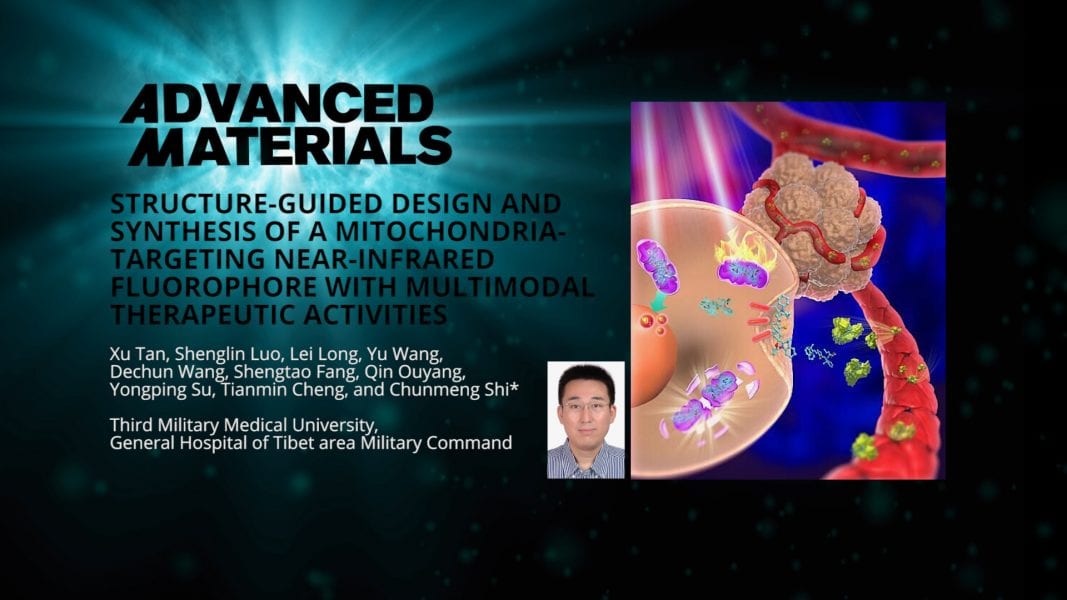In times of mild sickness, our immune system works together to overcome infections and restore good health. However, when the health problem is more severe, complex therapies are needed to combat the illness. For cancer treatment, it is important to develop targeted drug therapies that can be monitored. This requires precision in delivery and excellent efficiency, with minimal strain on the healthy parts of the body.
In a communication in Advanced Materials, Professor Chunmeng Shi from Third Military Medical University in Chongqing, China, along with his co-workers, present a strategy to develop small-molecule-based cancer theranostic agents for simultaneous cancer diagnostics and therapeutics.
To combine multiple, simultaneous advantages to efficiently combat cancer, the authors turned to a derivative of a known and FDA-approved near-IR contrast agent: indocyanine green (ICG). A promising new cancer-targeting mulitmodal agent, IR-DBI, is prepared by introducing a rigid cyclohexenyl substitution in the middle of the polymethine linker alongside a water-soluble carboxyl group and a lipo-soluble ester in different ends of the two N-alkyl side chains. This asymmetric, cationic structure enables it to bind closely to albumin proteins, leading to the formation of dye–protein complexes by self-assembly in plasma.
Compared to ICG, the IR-DBI preferentially accumulates in cancer cells, both for in vitro and in vivo experiments, and was shown to have significant chemotherapeutic anticancer activity in a broad spectrum of cancer cells with no obvious change in cell viability for normal human cells. Studies on subcutaneous tumor xenografts revealed that a dose of 15 mg kg–1 of IR-DBI significantly inhibited tumor growth.
Additionally, IR-DBI possesses synergistic photothermal (PTT) and photodynamic (PDT) therapy activity under NIR irradiation, which is supported by hyperthermia and excessive singlet oxygen levels. Combining PTT and PDT treatments with chemotherapy leads to reduced dosage requirements and high efficiency. In vivo studies confirmed this with remarkable tumor growth inhibition. Histological staining revealed intensive apoptosis and necrosis dominating the tumor area in the combined therapy group, with negligible damage to other organs. Furthermore, complexes of IR-DBI with human serum albumin (HSA) showed improved selectivity for tumor tissues compared to free IR-DBI, requiring a lower dose of only 10 mg kg–1 of the complex.
Following irradiation, histological staining showed abundant apoptotic and necrotic tumor cells in the HSA@IR-DBI irradiation group and a perfect inhibition, resulting in a 100% survival rate during the 90-day observation period.
To find out more about this promising cancer treatment, please visit the Advanced Materials homepage.

















